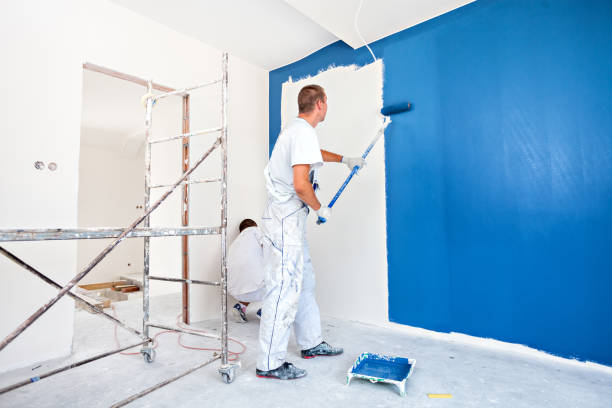
Master How to Brighten Up Your Home Sustainably With These Eco-Friendly Painting Hacks
Posted by on 2024-03-15
As we increasingly strive to live harmoniously with our planet, finding eco-friendly solutions for everyday tasks becomes essential. When it comes to freshening up our homes, painting is a common endeavor. However, traditional paint can contain harmful chemicals that are detrimental both to the environment and our health. Fortunately, there are numerous sustainable painting hacks that allow us to brighten our living spaces while also being kind to the Earth.
Firstly, selecting the right type of paint is crucial. Opt for paints that are labeled as low-VOC or zero-VOC (Volatile Organic Compounds). These compounds contribute significantly to atmospheric pollution and can cause health issues over time. Low-VOC paints minimize this impact and ensure better air quality inside your home. Additionally, some companies go a step further by offering natural paints made from plant-based materials and minerals—these products provide an even greener alternative.
Another sustainable practice involves proper preparation of your walls before painting. Rather than using chemical-laden strippers to remove old paint or wallpaper, consider environmentally friendly methods such as steaming or using a simple mixture of warm water and mild soap. This not only reduces the introduction of toxic substances into your home but also prevents them from being washed away into water systems.
When applying paint, choose tools wisely. Brushes and rollers made from synthetic materials are often non-biodegradable and derived from petrochemicals. Instead, look for brushes with natural bristles or rollers made from recycled materials; these options support sustainability without compromising on quality.
Moreover, be mindful about the quantity of paint you purchase. Overbuying leads to waste if excess paint is not stored correctly or disposed of safely. Calculating exactly how much you need based on room measurements helps prevent unnecessary surplus.
If you do find yourself with leftover paint after a project, don't let it go to waste! You can donate unused portions to local community centers or find creative ways to use it in future DIY projects around your home.
Finally, when cleaning up post-painting project, avoid pouring excess paint down drains which can contaminate water sources—instead adhere strictly to local guidelines regarding disposal or recycling of leftover paints and solvents.
By adopting these eco-friendly painting techniques when rejuvenating your living space, not only do you contribute towards preserving nature's beauty but you also create a healthier environment within your own home—a win-win situation for both you and the planet we call home.
Firstly, selecting the right type of paint is crucial. Opt for paints that are labeled as low-VOC or zero-VOC (Volatile Organic Compounds). These compounds contribute significantly to atmospheric pollution and can cause health issues over time. Low-VOC paints minimize this impact and ensure better air quality inside your home. Additionally, some companies go a step further by offering natural paints made from plant-based materials and minerals—these products provide an even greener alternative.
Another sustainable practice involves proper preparation of your walls before painting. Rather than using chemical-laden strippers to remove old paint or wallpaper, consider environmentally friendly methods such as steaming or using a simple mixture of warm water and mild soap. This not only reduces the introduction of toxic substances into your home but also prevents them from being washed away into water systems.
When applying paint, choose tools wisely. Brushes and rollers made from synthetic materials are often non-biodegradable and derived from petrochemicals. Instead, look for brushes with natural bristles or rollers made from recycled materials; these options support sustainability without compromising on quality.
Moreover, be mindful about the quantity of paint you purchase. Overbuying leads to waste if excess paint is not stored correctly or disposed of safely. Calculating exactly how much you need based on room measurements helps prevent unnecessary surplus.
If you do find yourself with leftover paint after a project, don't let it go to waste! You can donate unused portions to local community centers or find creative ways to use it in future DIY projects around your home.
Finally, when cleaning up post-painting project, avoid pouring excess paint down drains which can contaminate water sources—instead adhere strictly to local guidelines regarding disposal or recycling of leftover paints and solvents.
By adopting these eco-friendly painting techniques when rejuvenating your living space, not only do you contribute towards preserving nature's beauty but you also create a healthier environment within your own home—a win-win situation for both you and the planet we call home.